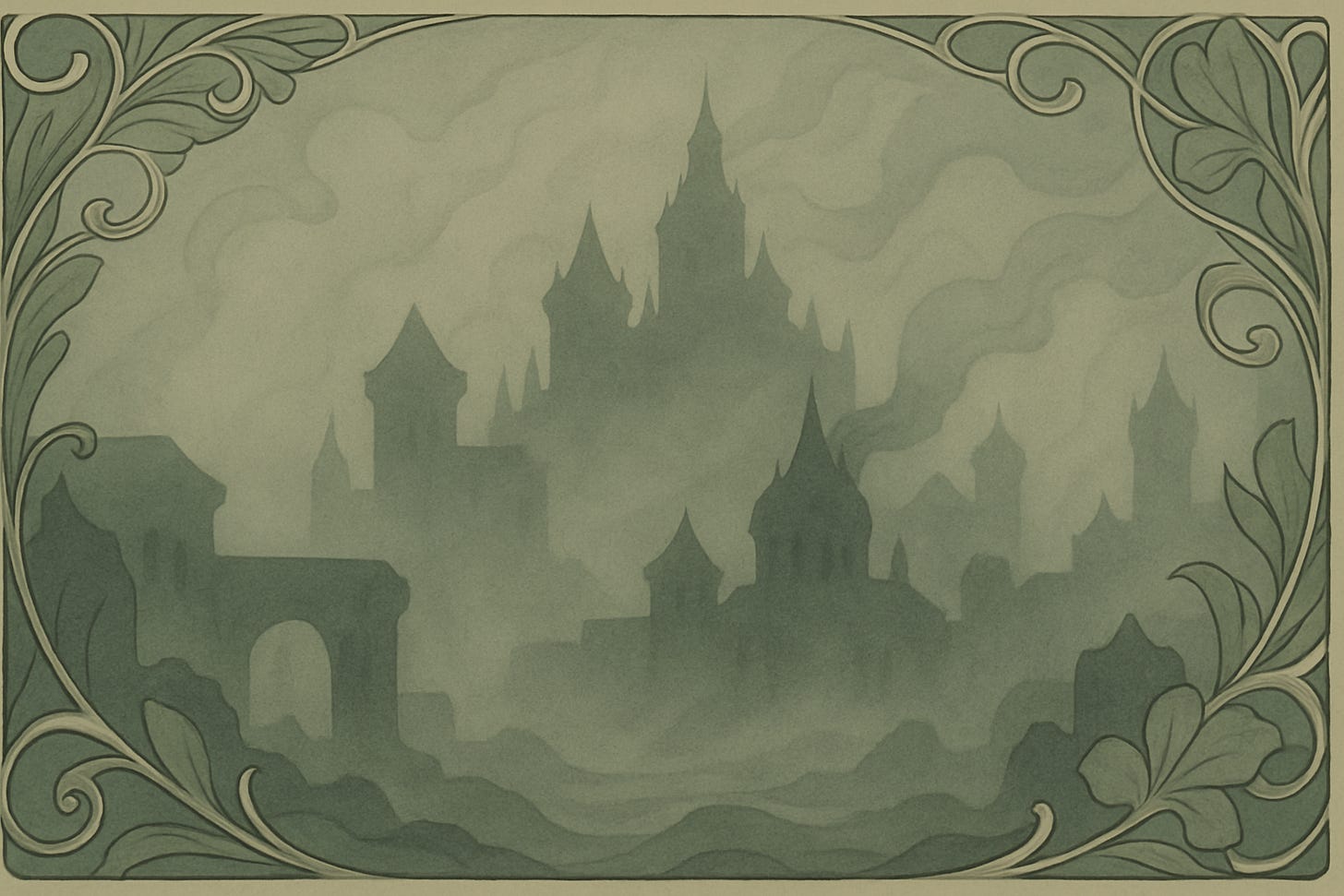This is the ninth part of my Fellowship-only rollout of Tolkien’s Tragedy: Concerning Númenor, The Rings of Power, and the Second Age. I welcome any and all feedback, questions, corrections, etc. In other words, be a part of this books’ journey to publication! Annon allen - THANK YOU!!!
There is one word that overwhelmingly describes the Second Age of Middle-earth: LOST. It is a lost age, three thousand years for which we have only relatively short accounts and fragments of stories. In fact, it’s so lost that readers will find repeated references to “lost-ness” often within the tales themselves. For example, in the story of “The Mariner’s Wife”, we find this passage:
It is said that Aldarion himself wrote records of all his journeys to Middle-earth, and they were long preserved in Rómenna, though all were afterwards lost.1
In this tale alone, we learn that Aldarion spent well over 50 years of his life in expeditions to Middle-earth! Imagine what things he might have seen, the interactions with great figures such as Gil-galad and Círdan, and perhaps even Elrond and Galadriel! Imagine how many books could be filled with the detailed accounts of such journeys! And yet, we know only that they did occur, and virtually nothing else about them.
Though the key synoptic works of “Akallabêth” and “Of the Rings of Power and the Third Age” recount the most important events of the Second Age, Tolkien left behind a number of fragmentary works that give us a glimpse into other aspects of this lost era. In this appendix, I will provide a synopsis of each of these works, with an encouragement for you, dear reader, to read them all for yourself!
The Fall of Númenor and the Lost Road
from The Lost Road and Other Writings (The History of Middle-earth Volume V)
The first of the Second Age fragments was composed by Tolkien in the late 1930’s. It is the result of a joint creative endeavor with C.S. Lewis. Mutually dissatisfied with the contemporary state of fiction, the two made a pact: they would compose within particular genres in order to demonstrate how each could be improved. Lewis undertook the writing of a space travel story, and Tolkien undertook the writing of a time travel story. Though Lewis’ endeavor eventually resulted in the novel Out of the Silent Planet and launched his well-known Space trilogy, Tolkien’s time travel tale, The Lost Road, never made it past a few chapters in draft form.
What we have from Tolkien’s endeavor is the story of a modern father and son who are haunted by the dim memory of a great cataclysm. Time travel in The Lost Road does not happen by the employment of a machine, but through various sorts of mystical excursions into the past. The father and son “dream-journey” back through preceding ages, until arriving in the ancient, lost world of Númenor.
The Lost Road was Tolkien’s first significant attempt to explore his fascination with the ancient legend of Atlantis. What we have of the story reads quite well, and in the chapters that actually deal with Númenor, we are introduced to the figures of Elendil and his son Herendil, living in the time that those familiar with “Akallabêth” can easily recognize as the years just before the Downfall itself.
What’s most striking about these “Numenoreans” chapters is the relative peace of them. The descriptions of placid beaches and flower-laden hillsides at sunset are evocative of an oceanside paradise. Furthermore, we see a loving relationship between father and son depicted as they discuss the present state of affairs in their land.
A good portion of the fragment involves a dialogue between Elendil and Herendil, in which they discuss the present controversy concerning the king’s desire to sail into the undying West, like his forefather Eärendel. It is clear that the young Herendil is increasingly influenced by the contentions of Sauron, and Elendil speaks strongly against them, foreshadowing division between father and son.
For me, the most notable passage for which there is no later corollary is the song of Fíriel, daughter of Orontor. As Elendil and Herendil return to their home, they hear her singing from a high window a song that is almost creedal in its lyric. It ends with the harrowing lines:
Keep reading with a 7-day free trial
Subscribe to The Tolkien Road to keep reading this post and get 7 days of free access to the full post archives.


